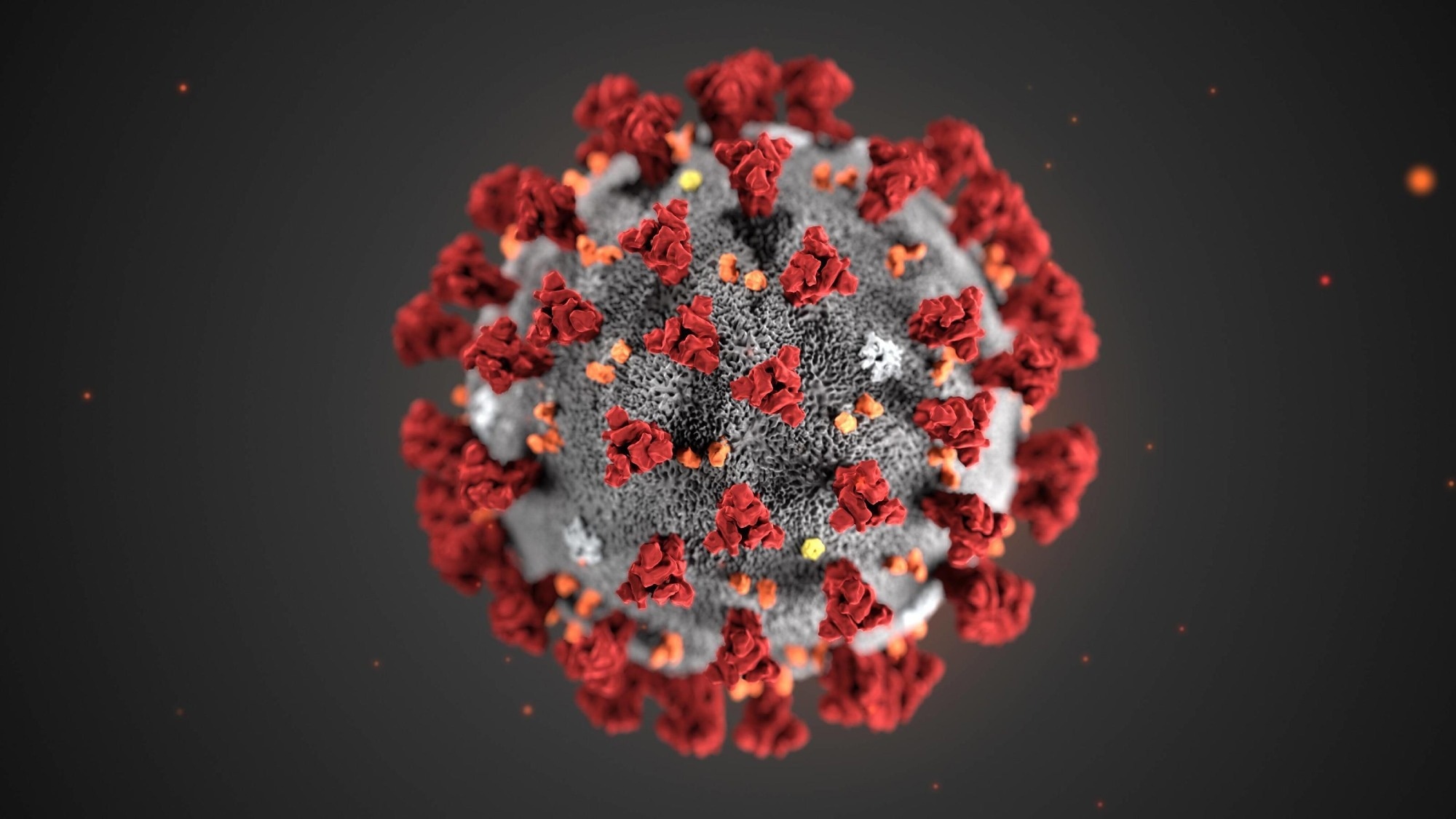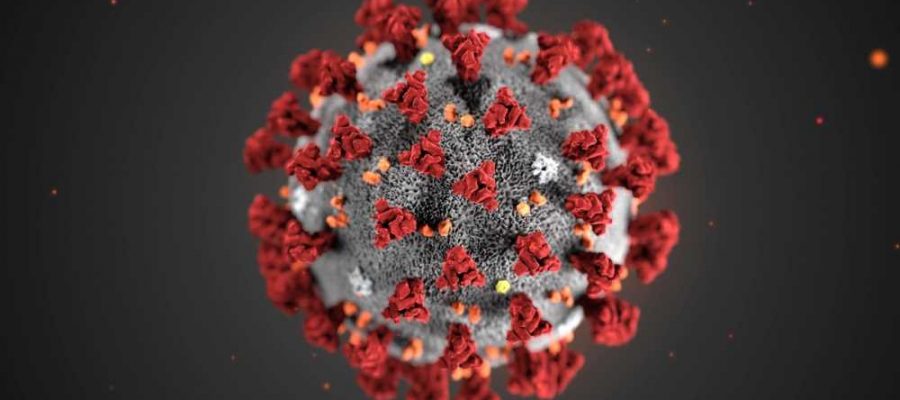In a recent study posted to the bioRxiv* preprint server, researchers assessed the impact of a syntenin inhibitor on severe acute respiratory syndrome coronavirus 2 (SARS-CoV-2) entry.

Background
Viruses depend on interactions with host factors to effectively cause infection and subsequently replicate. Therapeutic approaches that target such interactions enable the development of novel and effective antiviral drugs. Syntenic is an important protein that regulates the architecture of essential cellular membranes due to its role in protein trafficking. Due to this function, syntenin is also shown to have a useful impact against the human papillomavirus (HPV).
About the study
In the present study, researchers the usefulness of syntenin inhibitor KSL-128114 as a broad spectrum inhibitor against viral infections, including coronavirus disease 2019 (COVID-19).
The team collected synthetic fluorescein isothiocyanate (FITC)-labeled peptides that corresponded to the C-termini of the viral envelope (E) protein, open reading frame (ORF)-3, and nonstructural protein 11 (NSP11) from SARS-CoV-2. These peptides helped estimate the affinities towards recombinantly expressed and purified PDZ1-PDZ2, SNX27 PDZ, and MPP5 PDZ, respectively.
Additionally, the team investigated the consequences of viral infection and replication via the inhibition of syntenin interactions. This was achieved by penetrating the cells with a peptide-based inhibitor KSL-128114 to estimate the level of SARS-CoV-2 infection as per the concentration of the inhibitor present in Vero E6 cells. Furthermore, the antiviral mechanism of the inhibitor was analyzed by experimenting wherein the time of inhibition addition was assessed. The effect of adding the inhibitor two hours before and one or three hours after the infection was subsequently calculated.
Furthermore, the impact of the inhibitor on the binding of the virus to the host cell or the entry of the virus into the host cell was investigated by treating the host cells with the inhibitor two hours before infection. The team then estimated the level of viral ribonucleic acid (RNA) with quantitative polymerase chain reaction (qPCR) after one hour on ice or two hours of infection. Additionally, infected Vero E6 and Calu-3 cells were treated with chloroquine, and the infection was monitored.
Results
The study findings showed that syntenin PDZ1-2 bound with the highest affinity to the putative PDZ binding motif at the SARS-CoV-2 NSP11 C-terminus. Syntenin PDZ1-2 also showed low binding affinity to the peptide in the viral E protein. The affinities observed were low but similar to those found in endogenous syntenin interactions. The interaction noted with oligomeric E protein could be improved via avidity effects within a cellular setting. Moreover, when MPP5 PDZ was added as a control, it bound preferentially to the viral E protein. On the other hand, SNX27 was bound to all three peptides with comparatively lower affinity.
The peptide-based inhibitor KSL-128114 effectively blocked viral infection with no to minor effects on the viability of the cells. Treatment of the cells with 30 μM of the inhibitor showed that viral infection, as well as the number of new viral particles released, reduced significantly. Although treatment with the inhibitor before infection had a remarkable impact on the level of infection, the team observed that post-infected treatment did not result in any effect, which indicated that the inhibitor inhibited the initial steps of viral infection, which take place before the incidence of any interactions between the viral proteins and syntenin.
Interestingly, the antiviral effect of the syntenin inhibitor could not be elicited by inhibiting the interactions between viral PDZ binding motifs and the intracellular PDZ proteins. This was because these interactions occur in the later stages of viral infection. The results indicated that the inhibitor blocked essential endogenous interactions crucial in the initial phases of the viral life cycle, such as the interaction between PDZ and angiotensin-converting enzyme 2 (ACE2) proteins during ACE2 endocytosis and recycling. Testing the affinity of the inhibitor to SNX27 showed that the inhibitor bound with 15 times lower affinity to SNX27 than to syntenin.
The team hypothesized that syntenin PDZ1-2 was likely to bind to the ACE2 terminus and have a direct role in its trafficking. However, syntenin did not display any binding toward ACE2, while treatment of the ACE2 cells with the syntenin inhibitor did not impact the ACE2 expression on the cell surface. Instead, the team observed that inhibitor treatment reduced the expression of syntenin cargo syndecan-1, which suggested that the inhibitor induced the inhibition of syntenin-dependent endocytic trafficking.
The inhibitor did not cause any alteration in SARS-CoV-2 binding in the cells. Furthermore, the concentrations of both negative and positive-stranded single-strand (ss) RNA were reduced, suggesting that viral entry was inhibited. Moreover, viral infection was significantly inhibited in chloroquine-treated infected cells since chloroquine blocked endosomal entry in Vero E6 cells lacking transmembrane serine protease 2 (TMPRSS2) expression.
Overall, the study findings showed that the syntenin inhibitor KSL-128114 inhibited different viral infections, including COVID-19.
*Important notice
bioRxiv publishes preliminary scientific reports that are not peer-reviewed and, therefore, should not be regarded as conclusive, guide clinical practice/health-related behavior, or treated as established information.
- Richard Lindqvist, Caroline Benz, Vita Sereikaite, Lars Maassen, Louise Laursen, Per Jemth, Kristian Strømgaard, Ylva Ivarsson, Anna K. Överby. (2022). A syntenin inhibitor blocks endosomal entry of SARS-CoV-2 and a panel of RNA viruses. bioRxiv. doi: https://doi.org/10.1101/2022.08.18.504268 https://www.biorxiv.org/content/10.1101/2022.08.18.504268v1
Posted in: Medical Science News | Medical Research News | Disease/Infection News
Tags: ACE2, Angiotensin, Angiotensin-Converting Enzyme 2, binding affinity, Cell, Chloroquine, Coronavirus, Coronavirus Disease COVID-19, covid-19, Drugs, Enzyme, Intracellular, Peptides, Polymerase, Polymerase Chain Reaction, Protein, Respiratory, Ribonucleic Acid, RNA, SARS, SARS-CoV-2, Serine, Severe Acute Respiratory, Severe Acute Respiratory Syndrome, Syndrome, Virus

Written by
Bhavana Kunkalikar
Bhavana Kunkalikar is a medical writer based in Goa, India. Her academic background is in Pharmaceutical sciences and she holds a Bachelor's degree in Pharmacy. Her educational background allowed her to foster an interest in anatomical and physiological sciences. Her college project work based on ‘The manifestations and causes of sickle cell anemia’ formed the stepping stone to a life-long fascination with human pathophysiology.
Source: Read Full Article
